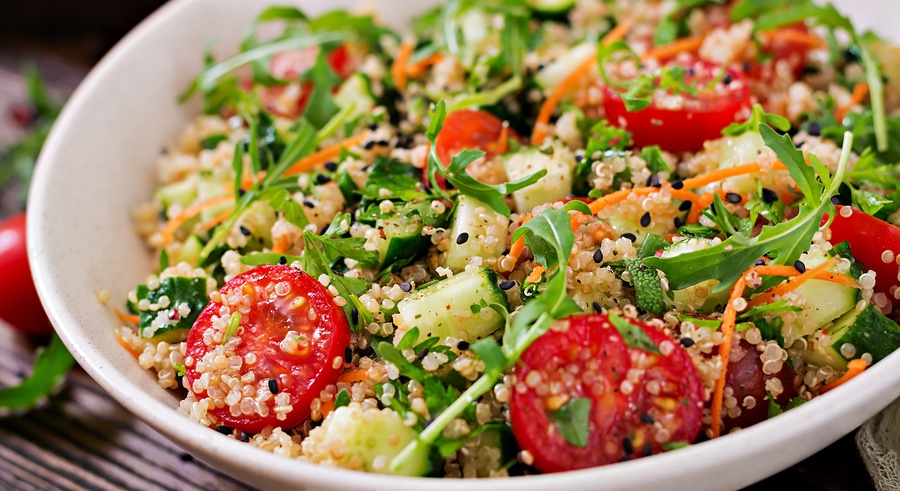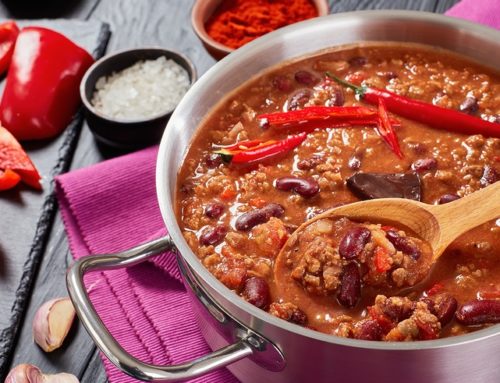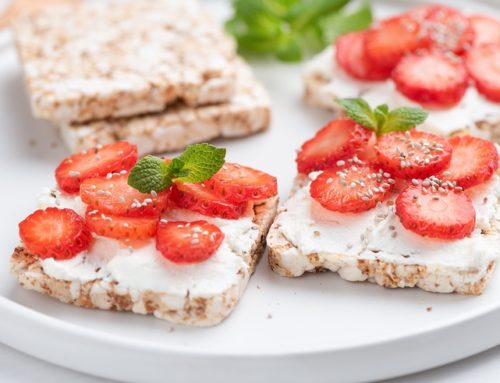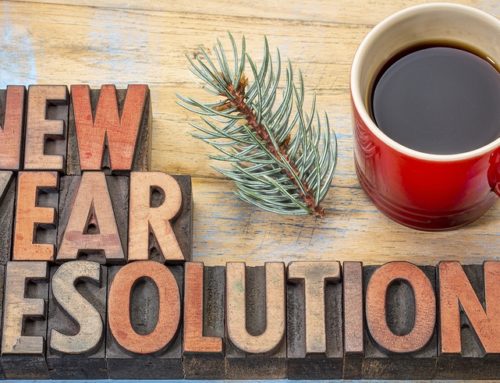Struggling with what to select at the salad bar? Maybe your salad isn’t filling enough, you find it boring, or you’re loading up on the wrong things. Before you give up on salads for good, check out our list of common salad slip-ups, and ways to build a better salad.
It’s not colorful enough.
Salads are a great way to boost your vegetable intake, but don’t forget the value of variety. The wide range of colors found in fruits and vegetables can be attributed to the micronutrients (vitamins, minerals, and phytonutrients) they contain. For example, beta carotene creates an orange color, so it makes sense that foods like carrots and squash are high in this nutrient. When making a salad, aim to include as many different colors as possible: red beets, orange carrots, yellow peppers, green spinach, purple cabbage, and white cauliflower are just a few of the endless colorful options! Not only will you get some valuable nutrition, you may also find some new and tasty additions to add to your repertoire.
It’s low on protein.
Yes, all those veggies are a great choice. But adding adequate protein to your salad is important to help keep you full and meet your daily needs. Ideally, an entrée sized salad should contain at least 3-4 ounces of high protein foods. Hard-boiled eggs, grilled chicken, marinated tofu, beans, salmon, tuna or low-fat cheese are all great options. You can choose one or mix and match, but make sure to get at least a palm-sized amount in those salads.
You added the wrong kind of crunch.
One way to liven up your salads is to include a variety of textures, especially some crunch. Unfortunately, this often means adding items such as croutons, bacon bits, candied nuts, or fried foods, which can be high in unhealthy fat, sodium, and sugar. Next time you make a salad, try some healthier crunchy options. Roasted chickpeas, edamame, nuts, and seeds are satisfyingly crunchy, with the added benefit of being chock-full of fiber and protein. And if you’re looking to add some sweetness to your salad, try crisp fresh fruit like apples, pears, or pomegranate seeds.
It’s got the wrong dressing.
Now that you’ve got a good, colorful variety of veggies, plus some protein and crunch, what dressing are you using? Thick, creamy dressings like ranch, bleu cheese, and Caesar can easily add more fat and calories to your salad than a fast food burger. Make it a habit to check the labels. In addition to fat and calories, check for things like too much sodium or sugar, which are also common culprits in commercially prepared dressings. Your best bets are light dressings, vinaigrettes, or simple oil and vinegar. You can also have some fun making your own dressing, with total control over what goes in it!
You’re thinking inside the box.
One sure-fire way to get bored of salad is to make it the same way every time. Spice things up by adding some unusual ingredients to your bowl! There are no rules as to what can go on a salad, so take a peek in your fridge or pantry and go for it. Grilled veggies, leftover quinoa from last night’s dinner, spicy roasted cauliflower, fresh berries, or roasted red peppers are just a few suggestions. Not only does it keep things interesting, but it’s also a great way to finish up those leftovers!
Feeling inspired to give salads another go? Whether you’re meal prepping, ordering in, or hitting up the salad bar, you’ll know how to build a bowl that is not only satisfying, but also healthy.
For more salad inspirations, check out the recipes and meal plans on VHPGO.





